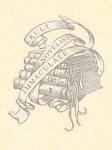One technique mentioned at OryCon was highlighting different types of prose in your work to see how much you use of one type or another.
Narrative is the author or pov character chit chatting, talking about what's happening. In can be anything from internal dialogue, if the pov is close, to the hand-waving overview of events that don't need to be studied closely because they're not that important to the story. Narrative is transitional. It links pieces of the story together so that they make plot sense as well as emotional sense. If we didn't have Benedicts's soliloquy in "Much Ado Without Nothing" to give us his internal thought process, what followed wouldn't make much sense. It'd be OMG, Benedict, WTF are you doing man?! This brings up the point that a character talking to themselves or their horse isn't real dialogue. It's just a different style of narrative. Sometimes dialogue as narrative works, and sometimes it's awkward and silly.
Dialogue is two or more people talking to each other. I personally don't count the tag lines as dialogue. Those are action, or narrative, or description. Take for example the duel in Cyrano de Bergerac. That's dialogue mixed with action (although his opponent barely gets a word in edgewise. Get it? Edgewise? Har har.) Without dialogue, we don't get to see characters interacting directly with each other. We just get told about how they are--argumentative, snippy, loving, chatty, etc. They talked long into the night isn't nearly as interesting as hearing part of the conversation.
Action is characters doing stuff, in real time, right now on the page. They stab it with their steely knives but they just can't kill the beast. Not all work has to have action in it, but you're walking a tough road without it. Limiting or eliminating action is done more in literary work than in mainstream or genre fiction. People who write with a distant narrative, talking about things that happened a long time ago when they were young and spry, tend to have the problem of interrupting action that is already distanced by the style choice with commentary from the 'present' pov character looking back on the situation. If you don't have much action or very distanced action in your work, that means the dialogue, narrative and description has to really shine to keep your reader's interest.
Description is the red-headed stepchild for many authors. Description is the establishment of setting. Sometimes dialogue and narrative and even action can help establish setting--like in the song "Up on the Roof" where the singer is telling us about how much he loves being up on the roof. He uses as much dialogue and narrative to paint a picture as he does visual images. In action, if a character is climbing a ladder then we don't need description to let us know that a ladder is somewhere in the room. Sometimes authors mistake description as 'expository lumps' and try to pare them down to nothing. An expository lump is narrative, actually, although it can be argued that it's establishing setting and therefore description. Pure, unadulterated description allows the readers to see, smell, feel, and hear where they are. It's sensory and hopefully immediate, rather than being demoted to 'background.' Too much description and you lose your reader in the field of flowers with every botanical name spelled out and the temperature of the air and the way the bison roam across the field munching so and such plants. If you add that the bison have always done this and for centuries they have selectively cropped these plants, making them more and more scarce--you've just dropped into narrative and have left description behind.
A manuscript is not going to be balanced in these elements. Trying to make it that way will make you crazy. However, highlighting these elements can show you if you've been neglecting or omitting one of the four completely. It would take an unusual short story and the very, very rare novel to short change one element and still pull off something that's enjoyable. You can also determine if you have big chunks of one type of writing. Sprinkling is a good technique, where you intersperse the various types of writing among each other so that you don't have big chunks. Expository lumps aren't the only lumps to be wary of in a manuscript. Dialogue lumps (council meetings, argh!) action lumps (on and on with the blood and guts, gack) and descriptive lumps (as previously noted) can be just as tedious as a long narrative lump.
Good luck out there and keep writing.







No comments:
Post a Comment